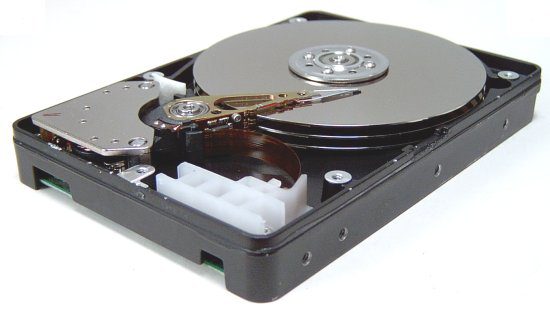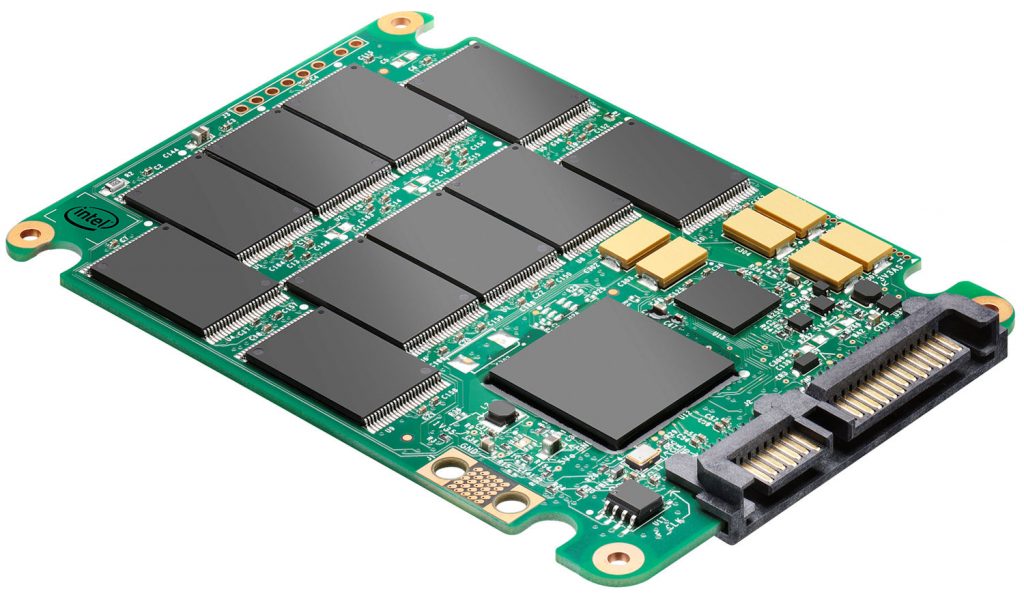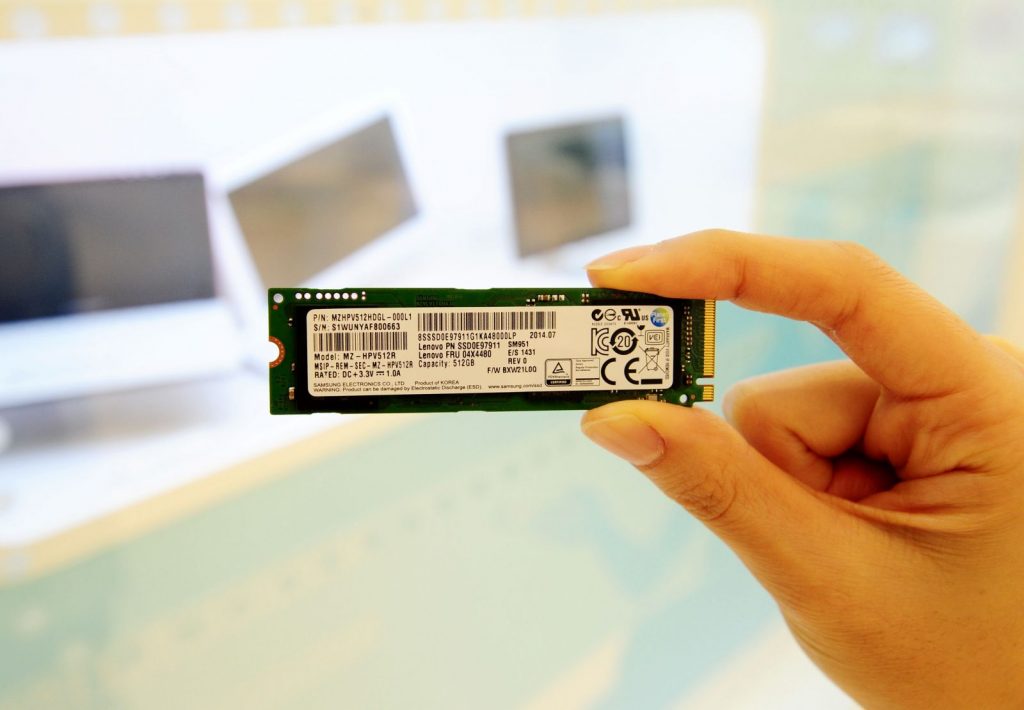There are two types of popular computer storage devices today. A hard disk drive (HDD) and solid state drives (SSD). Let’s take a look at the history and differences between the two:
Computer Storage Types
Hard Disk Drive
Hard Disk Drives have been around since 1956 when they contained 50, 24 inch platters and took up the space as big as 2 commercial refrigerators. But for all their size, they could originally only hold about 3.75 Megabytes of data. In the 1980’s computer manufacturers adopted a smaller form factor for these drives, one similar to what we still use today.

These drives spin 7,200 times per minute and can now hold up to about 10 Terabytes of Data. Learn more about measuring data on computers.
Solid State Drive
In a solid state drive there’s no moving parts. It writes data using special chips and an electrical grid system and instead of writing data to a disk, it uses something called pages.

Pages can be grouped into blocks and in order to write any new data, you need to find a blank page to write to. Which is why a new Solid State drive can be lightning fast, while an older one with data on it can slow it down a little bit.
New M.2 technology that’s available in solid state drives is actually 25 times faster than a regular hard disk drive. They’ve even been able to shrink the size down to about the size of a stick of gum.

The solid state drives are now available in your smart phones, tablets, PCs, and external drives as well.
As you can see, you have many choices when looking for the right computer storage device. But it’s important to make sure the hardware is compatible with your computer. So, if you find yourself looking for an upgrade, you’ll want to contact the manufacturer of your computer or device or reach out to your IT support to make sure you find the right drive for you!
If you enjoy our videos don’t forget to “Like”, comment on, and share them on social media and subscribe to our YouTube channel or Follow us on Facebook to make sure you never miss an episode!
